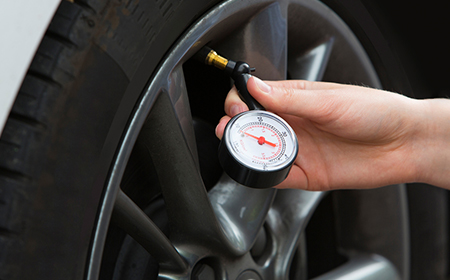A common misconception is tires should be inflated to the max PSI listed on the sidewall of the tire. To properly inflate your tires, you need to look at your owner’s manual or the placard on your door jam, or in the glove box, and inflate the tires to meet your vehicle specifications. Tires are designed to hold a range of PSIs to suit different vehicle requirements, with the max PSI being the upper limit of the tire. The recommended PSI for your vehicle will allow your vehicle to perform to the top of its ability.
Having improper tire pressure reduces fuel economy and increases friction on the tire, causing tires to wear prematurely. Under inflated tires cause premature wear on the shoulders of the tire and reduce fuel efficiency. Over inflated tires can be equally as damaging due to less of the tire is hitting the road, reducing traction, and will wear the center tread more rapidly. Over inflated tires are also more prone to damage when hitting a pot hole or road debris. Air pressure should be checked when the vehicle has been parked for at least few hours, and a minimum of once a month or before long trips.
